If you are still reading this deep in my informal and unscientific survey of black and white film stocks, I salute your endurance in following what has evolved from a mild curiosity, to a project, to a bit of a personal quest.
Apart from some ‘Lightroom Library’ shots in part 1, most of the photos in these posts were shot with this survey in mind and mostly with a Hasselblad 500CM in a relatively stable situation, either landscape or exterior art/architecture. This was a great way to compare multiple stocks, but the process of shooting started to take on a bit of a low stakes “test” feel. Set up a shot on the tripod, try 2 or 3 film backs in the same exact set up. Lather, Rinse, Repeat. I have a lot of pretty shots of the magnificent trees at the Rockefeller Preserve and the Henry Moore sculptures at Pepsi’s Global HQ, but I could go out and shoot a highly similar shot of any of them this afternoon.
On reading Part 2, Graeme, a friend of mine and fellow still film enthusiast, asked me if I had tried pushing HP5? I had heard of the idea of pushing HP5 from a couple of trusted sources as well as some friendly strangers with cameras, and it seemed like an idea that had found its time for me as I have had the urge to try my hand at street shooting, especially with summer coming on in NYC. Originally, I had thought the series would end with Part 3, as I had shot pretty much every emulsion I wanted to shoot (plus a few I tried just for the sake of rounding out this series of posts.) But rather than just pushing HP5, I conceived of an added installment of the ‘grand tour’ on 35mmc in which I would try shooting all of the major 400 ISO films pushed to 1600 to see how they performed under those conditions.
More fun with Black & White! Ok, here we go…
The Brimfield Antique Fair, a massive semi-annual event that takes over an entire town in Massachusetts, was the first place I tried pushing b&w, naturally using HP5 (@ 1600) coming out of my chat with Graeme. It was also a transitional shooting situation where I found mostly inanimate subjects to dip my toe in the water of shooting in more of a “street” style, but not attempting too many moving targets and still being a little shy about approaching people.
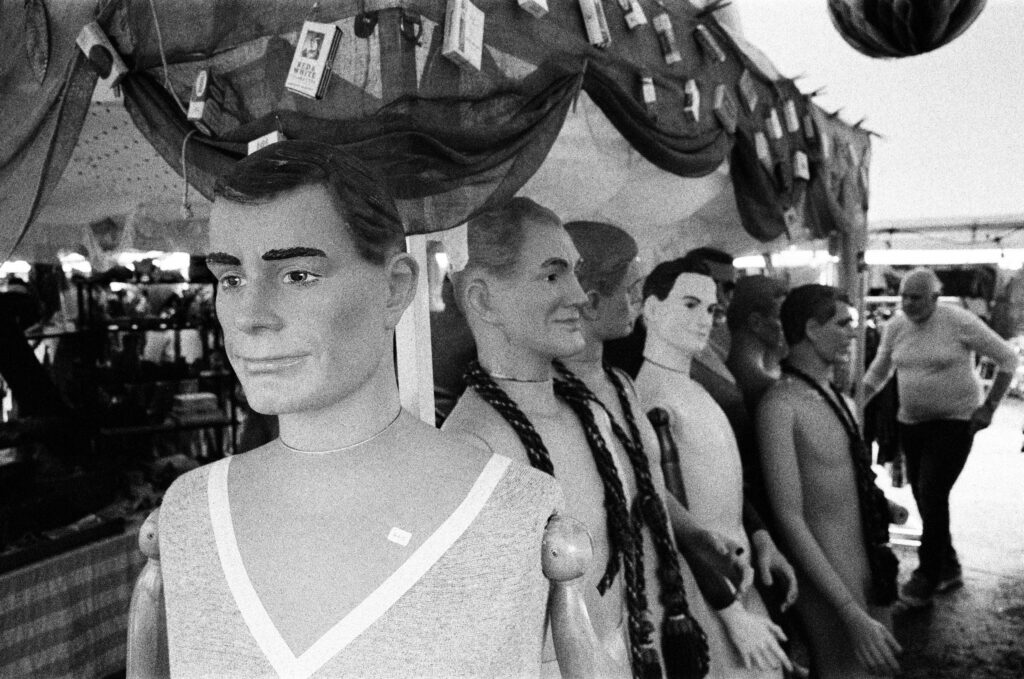
But I did shoot a lot of inanimate objects inhabiting a mildly disturbing corner of “The Uncanny Valley.”
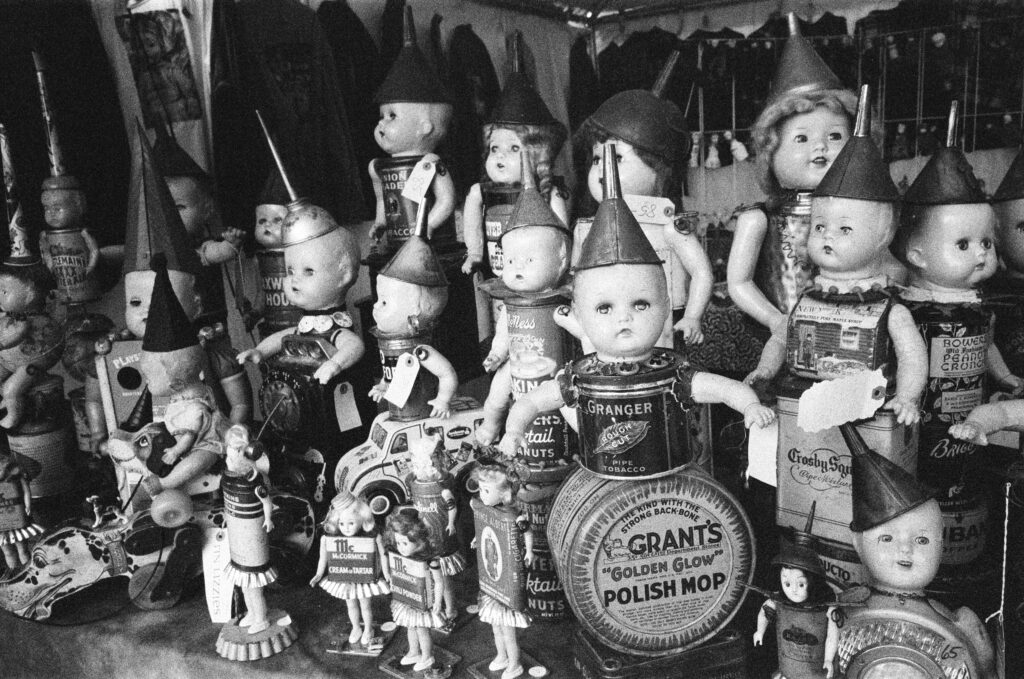
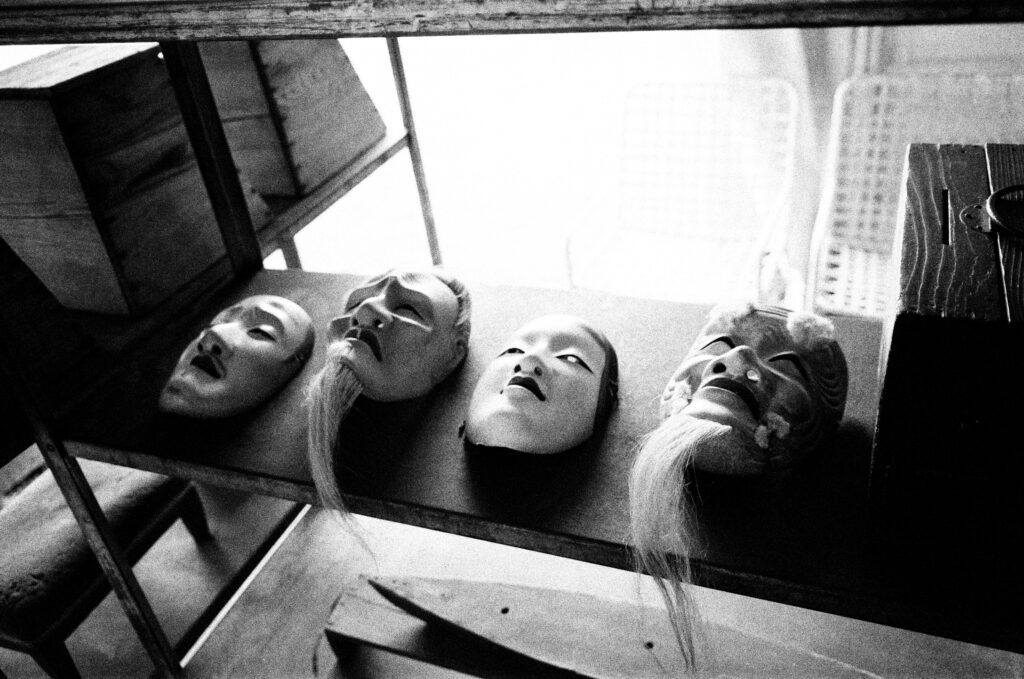
As the day went on, I started to include people in my shots, but I was pretty tentative about it.
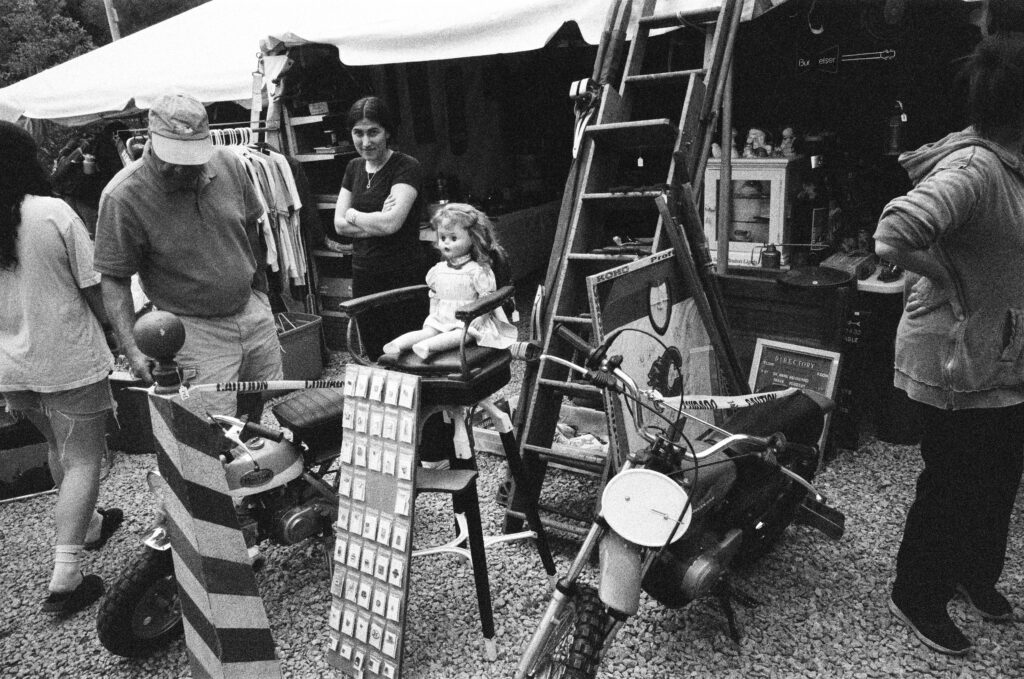
The next film I tried pushing was Tri-X.
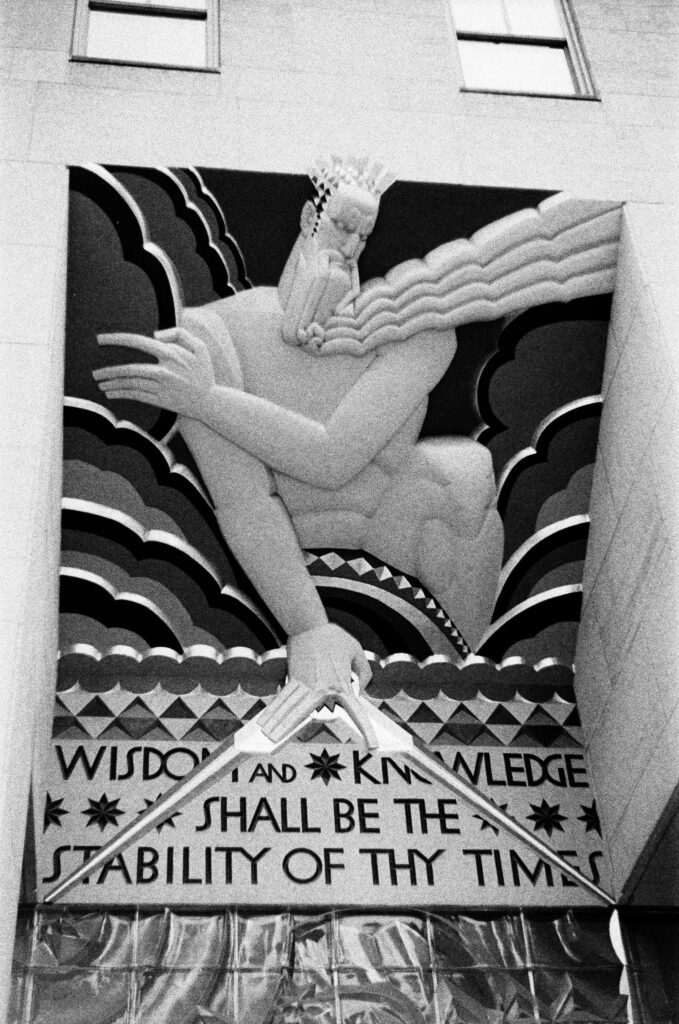
Again, my early efforts were in my comfort zone of shooting inanimate objects like the famous golden statue of Prometheus that overlooks the Ice Rink at the heart of Rockefeller Center.
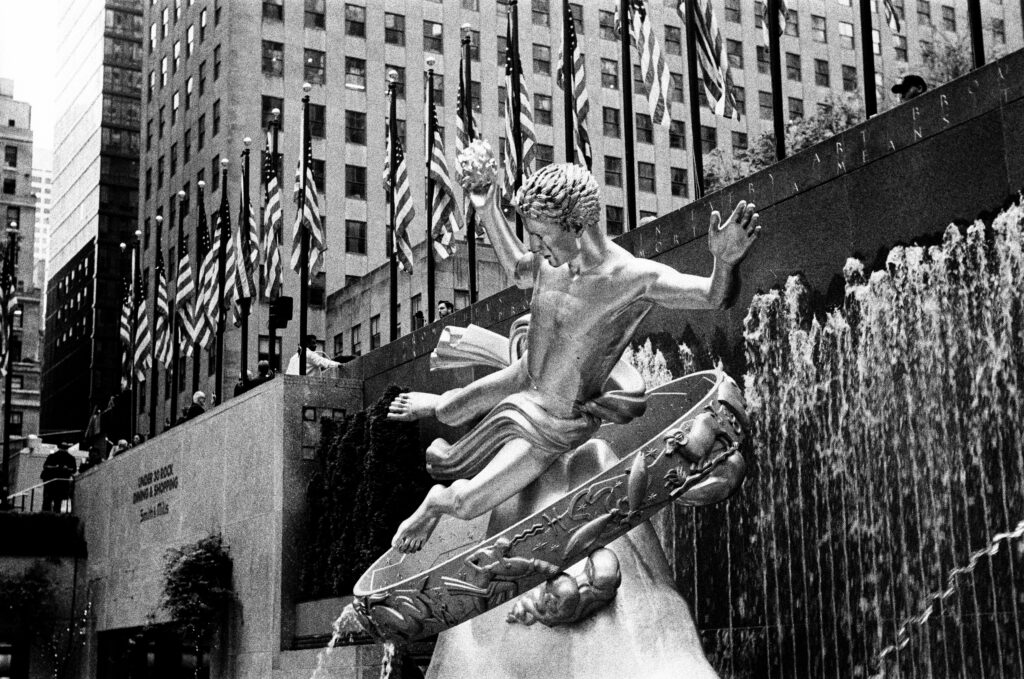
But I started to be a little bolder and grab shots that included people…
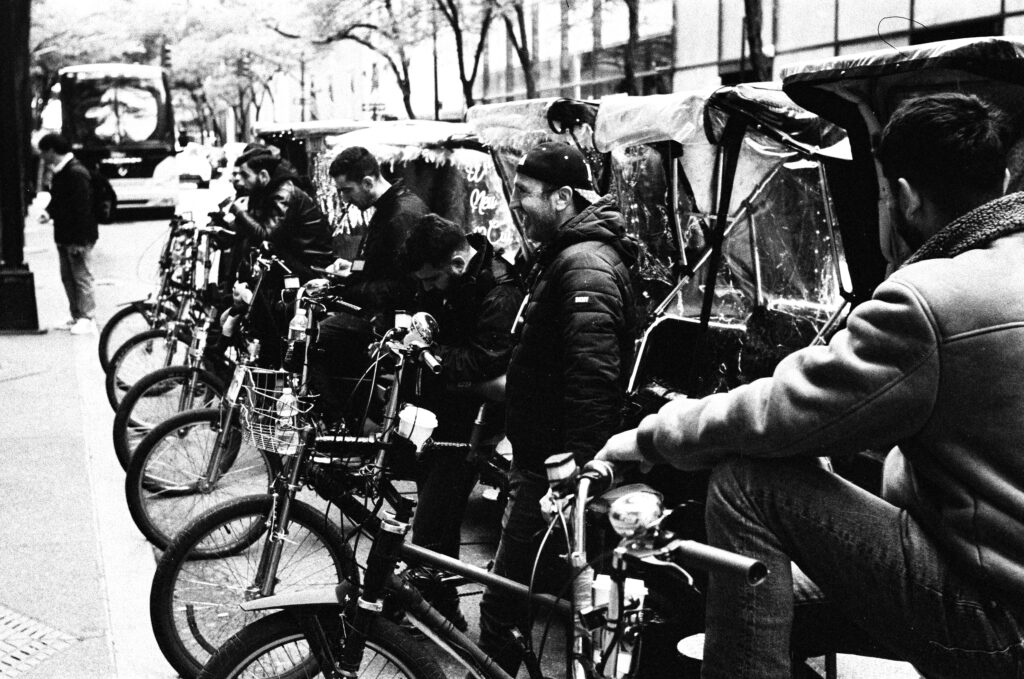
And some action!
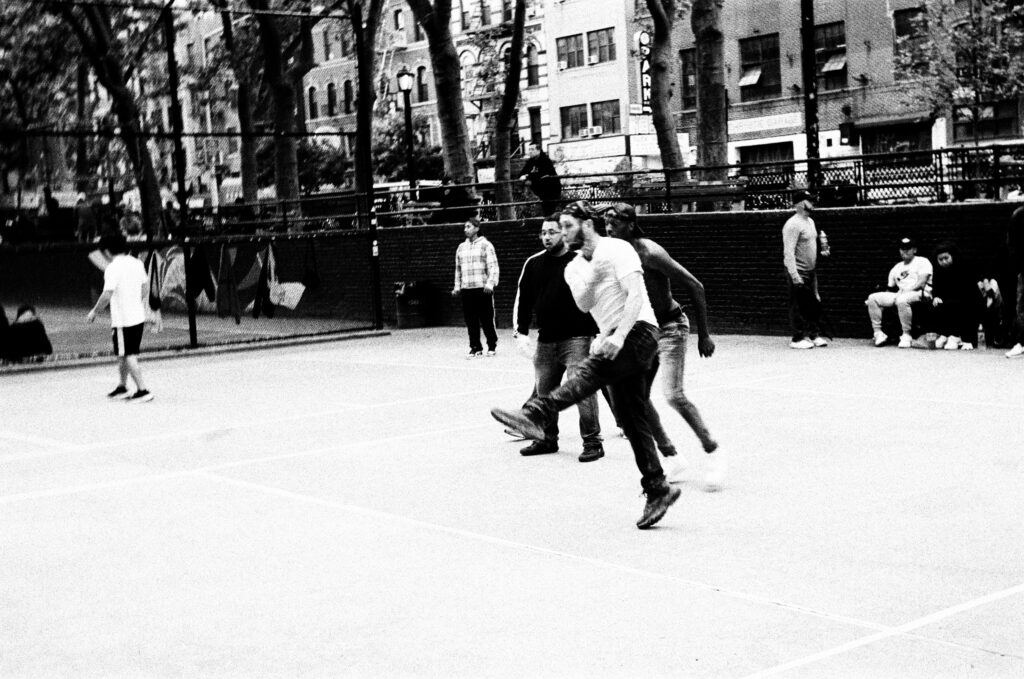
Walking around New York City as it was coming out of its cold weather shell and trying to grab an interesting moment wherever I might wander was kind of exhilarating after months of wintry landscapes on sticks with the Hasselblad. This was precisely the style of shooting the Leica M3 was made for! It felt like starting the game clock after a month or two in training.
The next stock I tried out was Ilford XP2. Shooting at 1600 meant I could shoot handheld in lower light situations like in the subway.
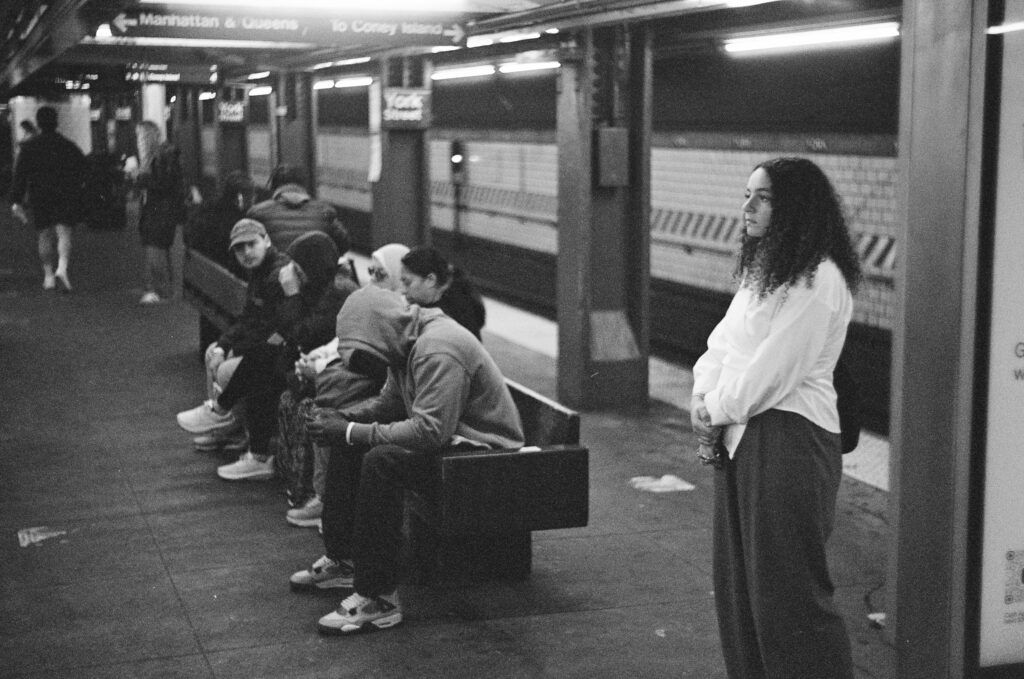
I was slowly getting more comfortable shooting people, including this street portrait near the film lab where I was going to drop off a batch of film.
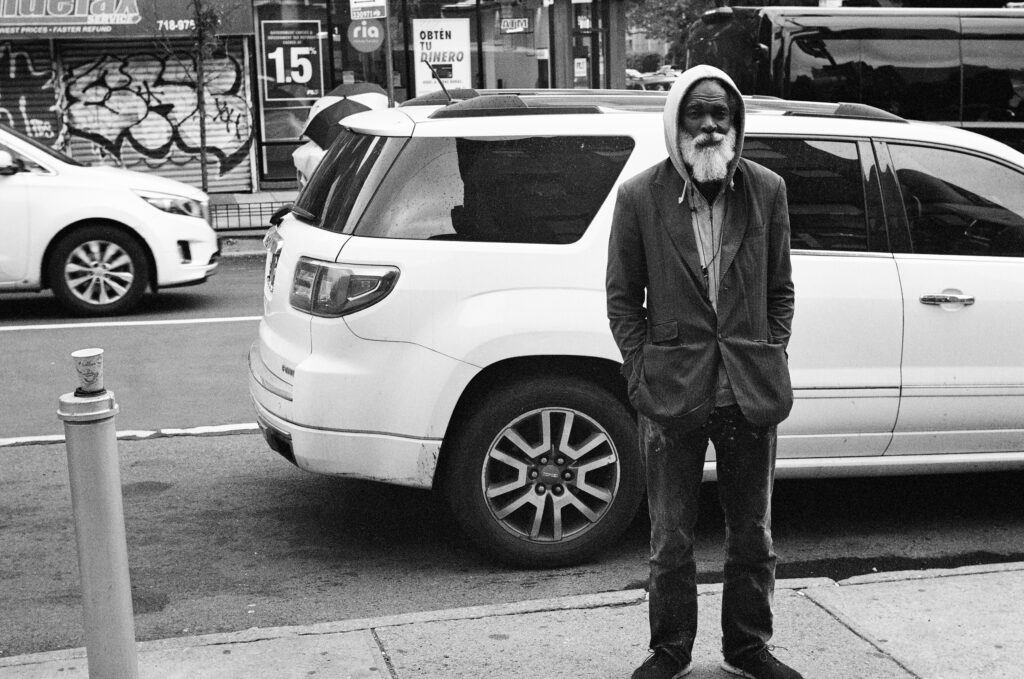
Part of my ongoing goal with the Leica is to get more comfortable shooting quickly in case something interesting crosses my path, like this dog walker with her poodle and their matching hairdo’s.
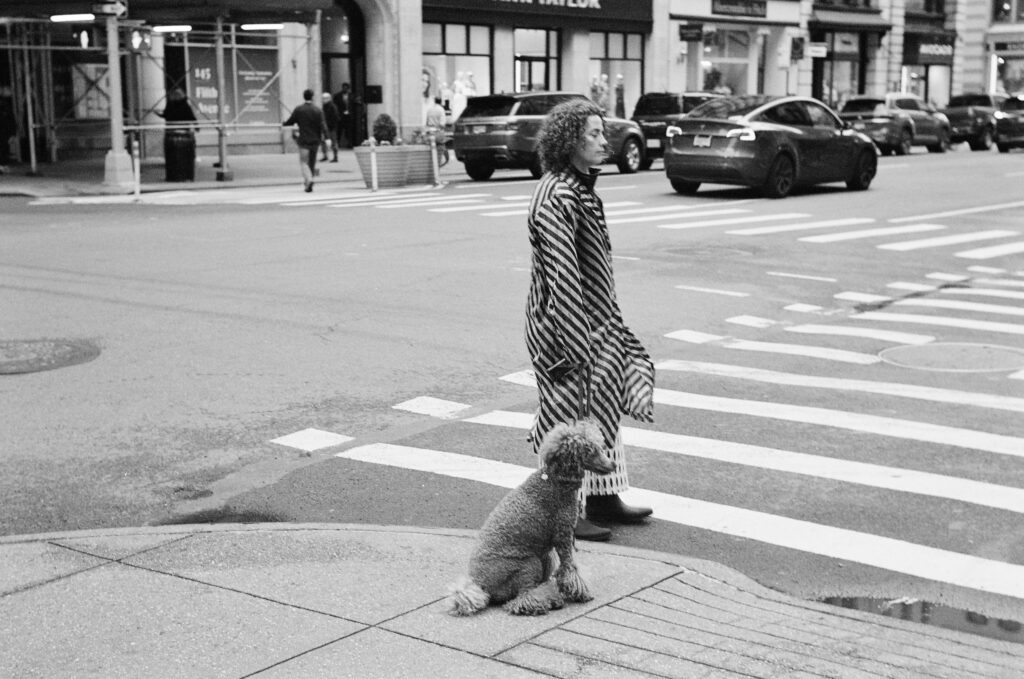
In terms of the the B&W survey, one of my early findings is that I’m not seeing a giant loss of performance when pushing 2 stops and whatever grain pushing adds is more than offset by how it allows me to shoot much more quickly and instinctively using techniques like zone focusing with a higher depth of field as well as shooting in a wider range of lighting situations.
Another early conclusion with the stocks I know the best, is that HP5 and Tri-X shot at 1600 largely look like themselves with a some grain but nice contrast, and so does XP2 with a comparably crisper, ‘cooler’, finer-grained look.
Shooting Delta 400 pushed 2 stops continues the trend of performing both well and more or less parallel to its strengths when shot at box speed — nice contrast, deep blacks and pretty good grain structure.
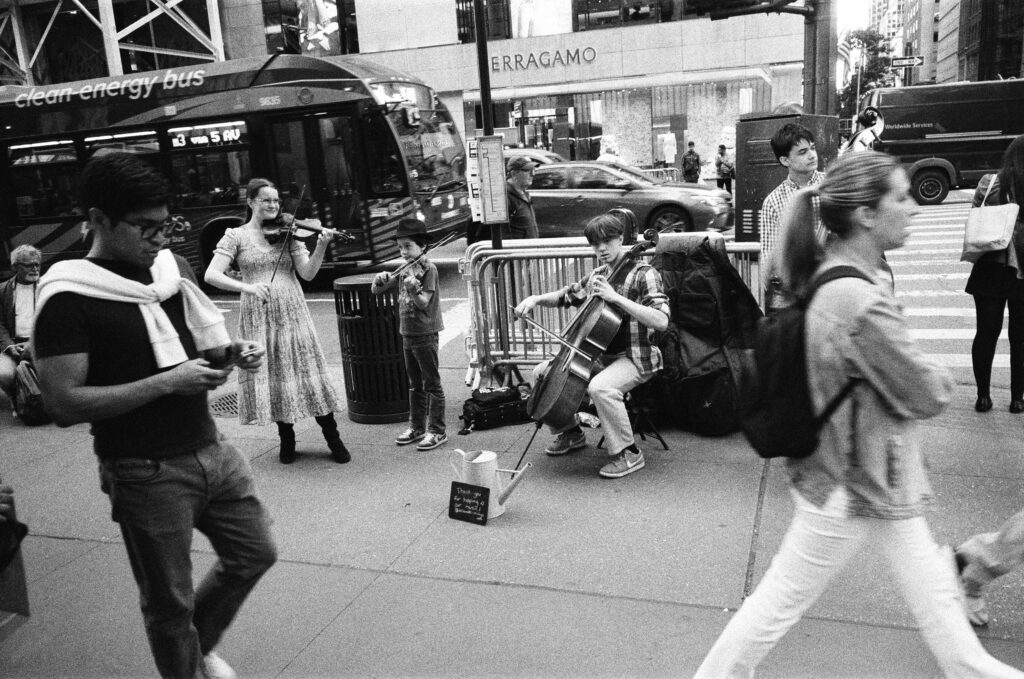
Grabbing things that are moving quickly doesn’t always allow for a lot of time to calculate exposure, sometimes you swing, shoot and pray. While the cyclist is a little underexposed, to me this shot has a good dynamic range from deep black to bright white, and I like the energy of the frame with the approaching cyclist, the rising steam that is visually echoed by the highlights on the puddle gathering at the base of the pipe. To me, those NYC steam pipes have a timeless look.
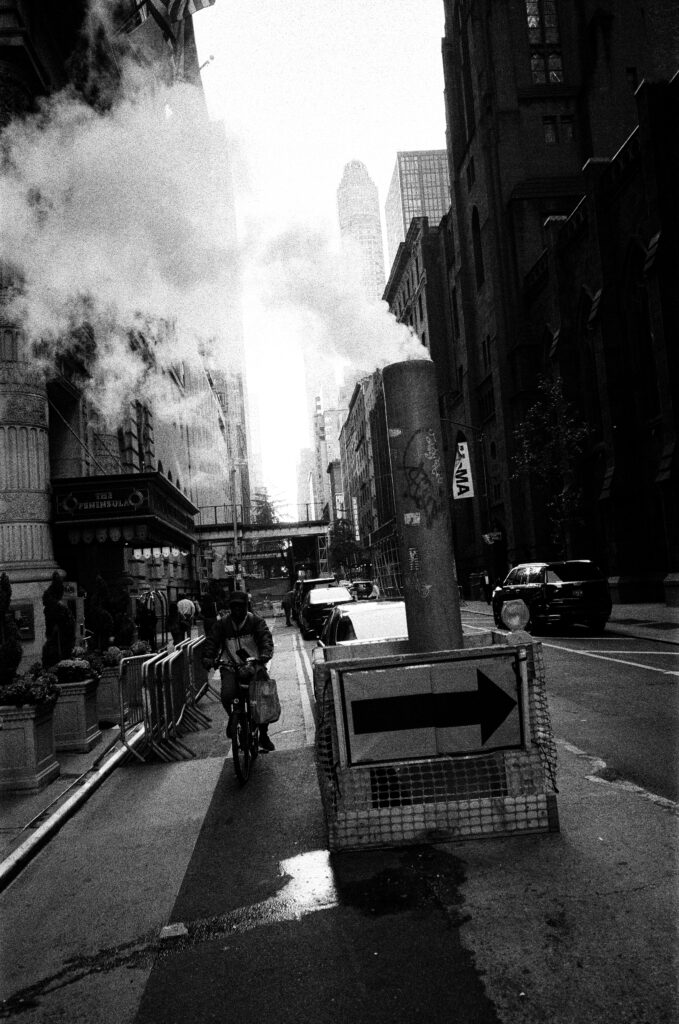
I think Delta 400 looks pretty good shooting at the edge of it’s latitude and I like that these shots don’t descend into the all too familiar pit of muddy grainy mush that was a frequent buzzkill during my first couple of months of shooting. This shot, while a bit soft because it was handheld wide open around 10pm in the evening at Grand Central, has nice deep blacks and white highlights. It also feels kind of timeless to me, people have been running to catch a train on those marble floors for over 100 years.
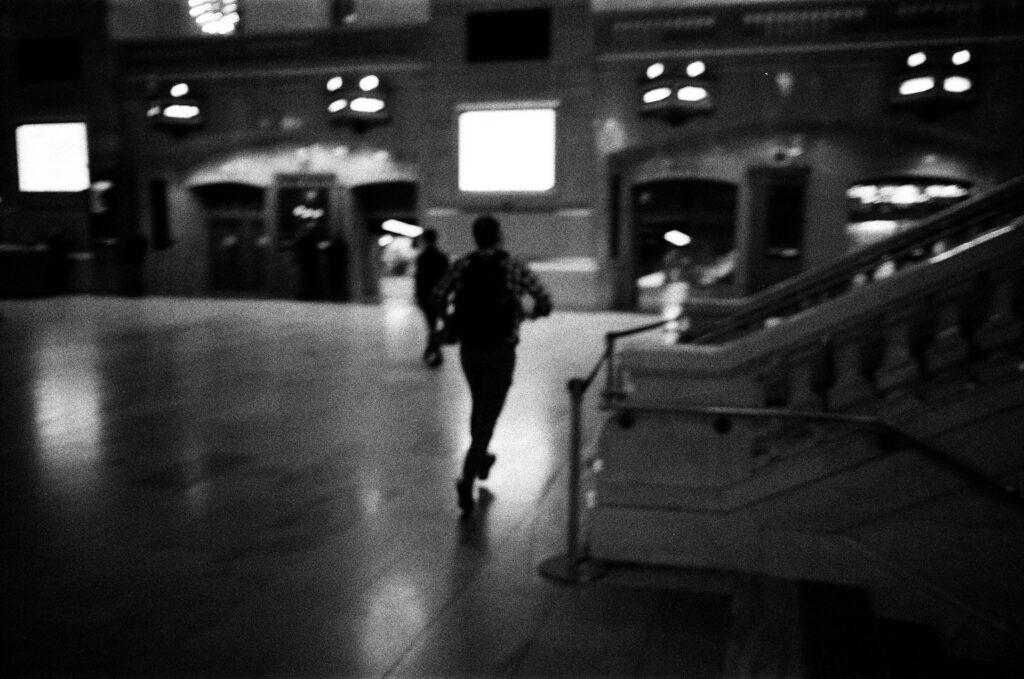
I put that roll of Delta 400 through its paces compared to some of the others stocks, and I think it delivered pretty cool results!
I’m less familiar with Rollei RPX 400, having only shot it for an earlier installment of this b&w survey, but I have to say I am pretty impressed with its performance while pushed two stops.
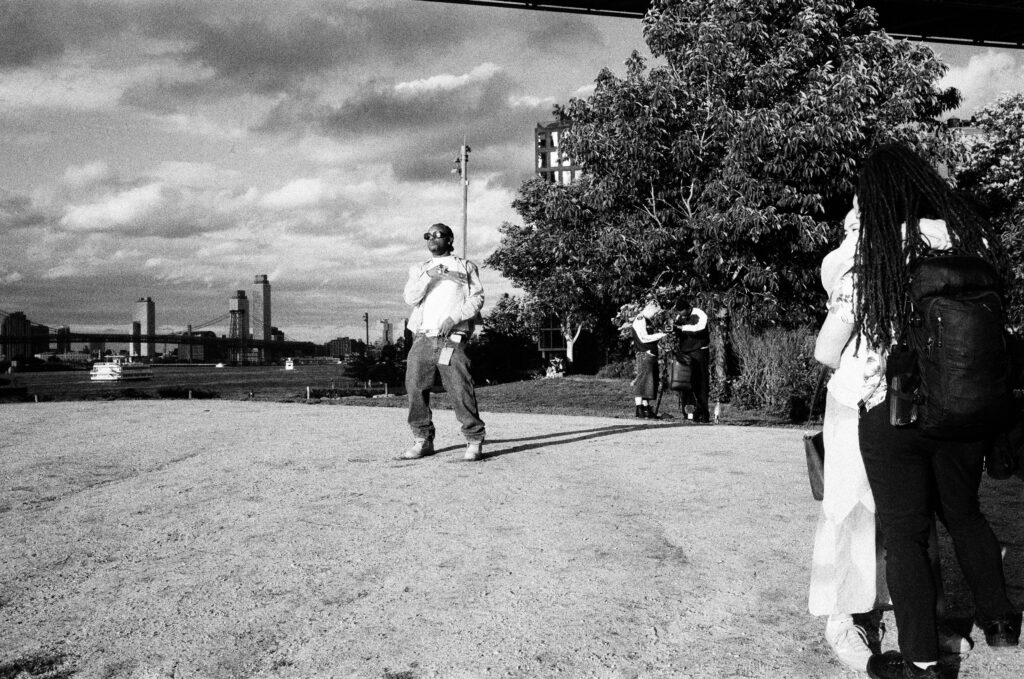
The grain structure is pretty impressive and looks pretty strong compared to the roll I shot at box speed.
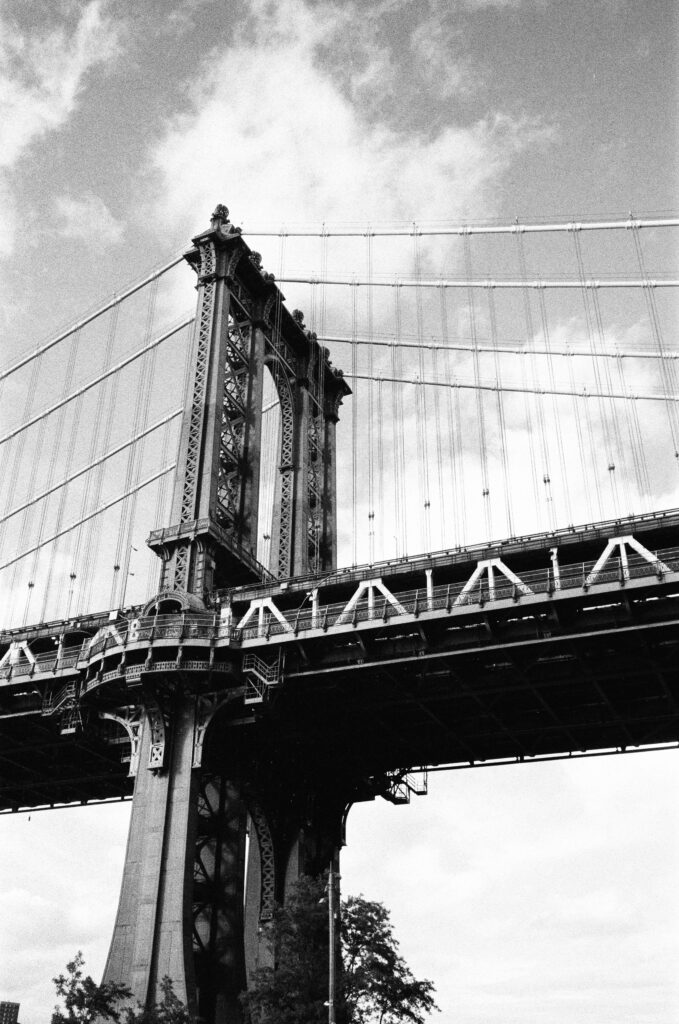
RPX 400 might be a bit of a dark horse that did very well in this round of the survey.
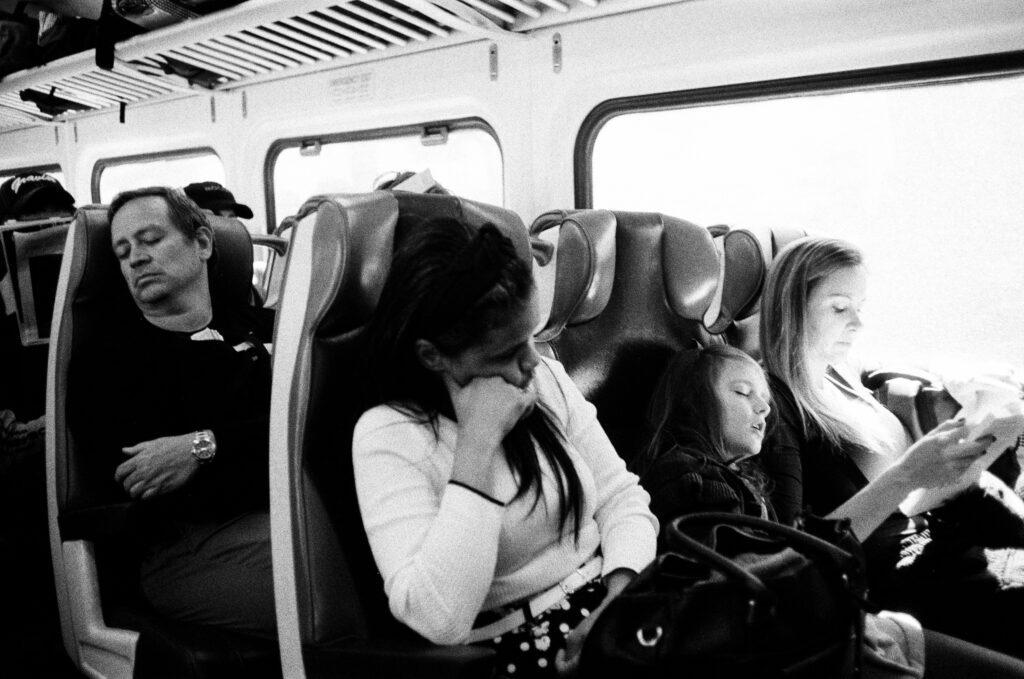
As I descended deeper into the rabbit hole of ‘completism’ on this journey through the film stock catalogue, I added Lomo Berlin into the mix, which I haven’t shot since getting the M3. My son Graham, his girlfriend and I went out shooting on a nice Sunday afternoon in spring and cool things kept happening, like meeting this indie punk band, JOBBER, who were preparing to shoot a video with a big time wrestler near our place in Brooklyn.

We went out to Coney Island where I continued to practice my street shooting skills. I grabbed a quick shot of this couple who were heading toward the boardwalk. I’m glad I was roughed in for exposure and able to swing and shoot by zone focusing, as they weren’t waiting for anything.
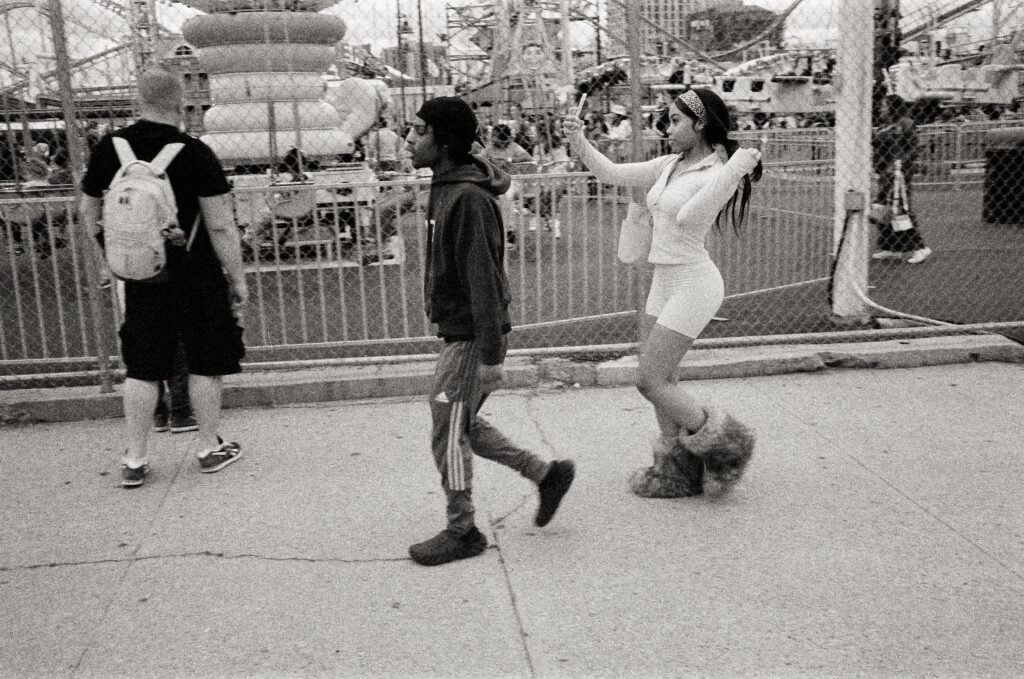
I love all of the different interacting circular motions in this shot of the rides at AstroLand. Lomo Berlin feels a little lower contrast and a bit more ‘grain forward’ than some of the other stocks I’ve tried pushing and I was a little let down at first when it came out of the lab. I’ve gotten more used to it and have rationalized that it might give these shots a bit of a vintage feel. But I think I prefer my contrast higher and my grain a little more restrained, perhaps in the Tri-X/HP5 zone if not Delta 400. But if you’re looking for some ‘chunky’ grain, Lomo Berlin is a place where you’ll find it.
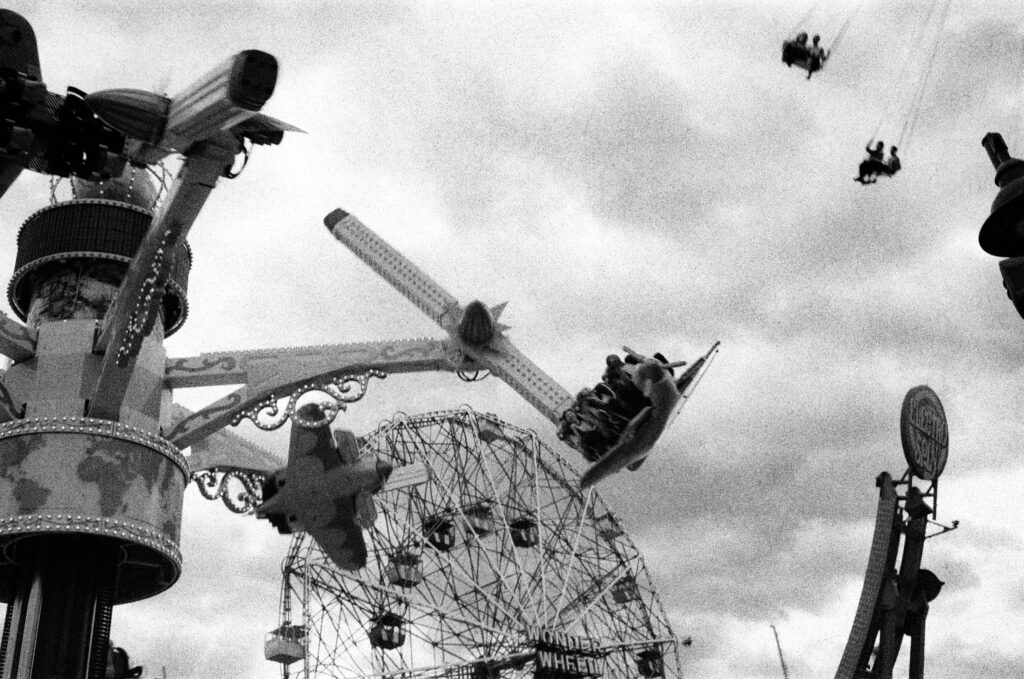
Kentmere 400 has impressed me mightily, both at box speed on 120 and here pushed to 1600 on 35mm. This is a favorite street portrait that shows the progress I’m making in asking people for a photo.
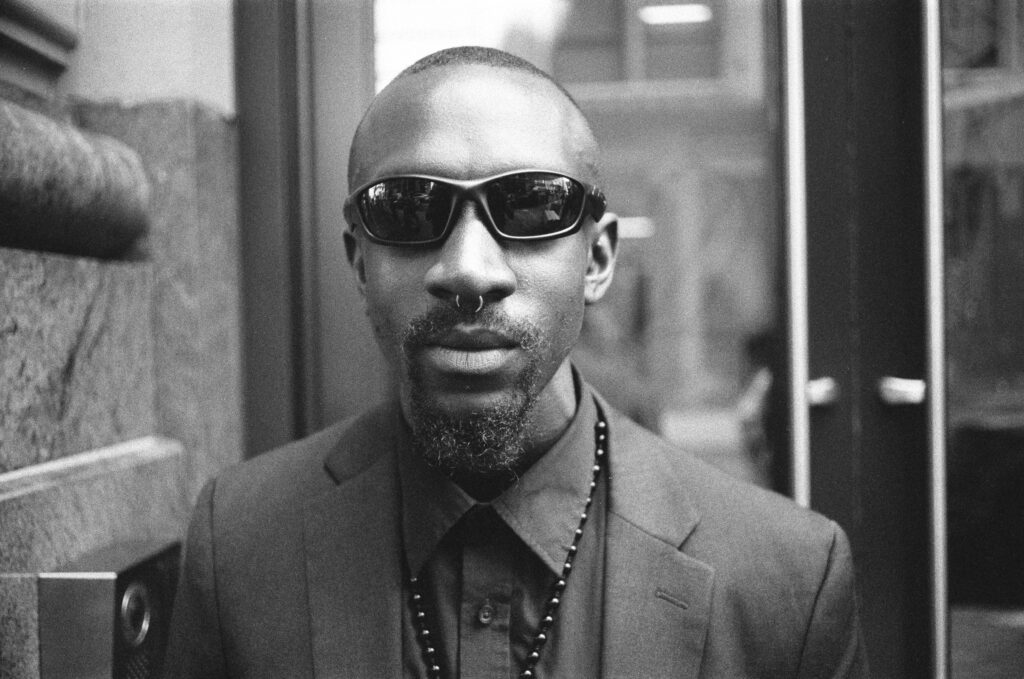
One of the film specialists I met at the camera store up in Canada swore by using a green filter for street shooting; he felt it is flattering for skin tones. I recently picked up a vintage Leica Yellow/Green filter and I think it’s a very good option for street portraits.
Compared to the calm, slow and deliberate process of shooting landscapes with the Hasselblad on sticks, street shooting with a Leica requires a completely different relationship to time and motion. I have to be alert and ready to swing and shoot in reaction to whatever the world has on offer. To this day, I miss more cool shots than I get, but the more I keep shooting the faster and more confident I’ve gotten.
I was walking down Avenue A heading to catch the subway and saw this impromptu scene unfolding in front of me. I love the glamorized grunge of an attractive young woman striking a pose on the crosswalk in front of an old school graffiti wall. For me, it has a bit of a 1980’s vibe. Luckily I was roughed in and close enough for rock and roll in terms of focus and exposure to get a cool shot, because it was over in about a second.
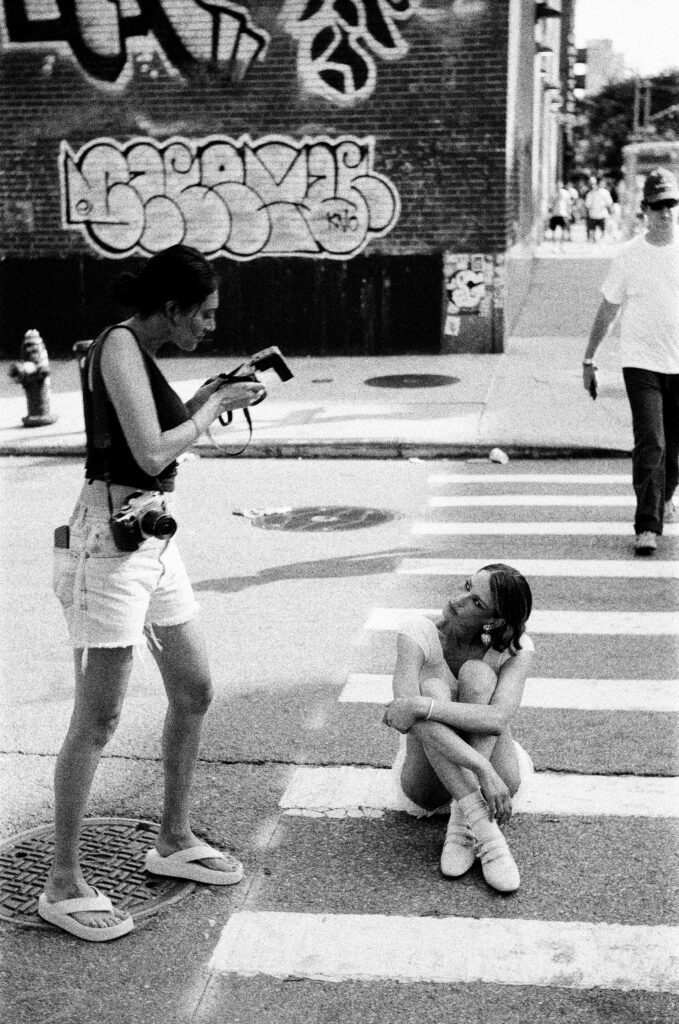
If I could have that second back, I might frame right just a bit to get the full body of the oblivious passerby fully into the frame, and if I had another second or two beyond that I might have taken a fresh meter reading to fine tune the exposure. Nevertheless I think it’s one of my best NYC street shots so far because of the interesting moment it captures.
I rounded out my exploration of pushing 400 ISO stocks with Kodak TMax 400.
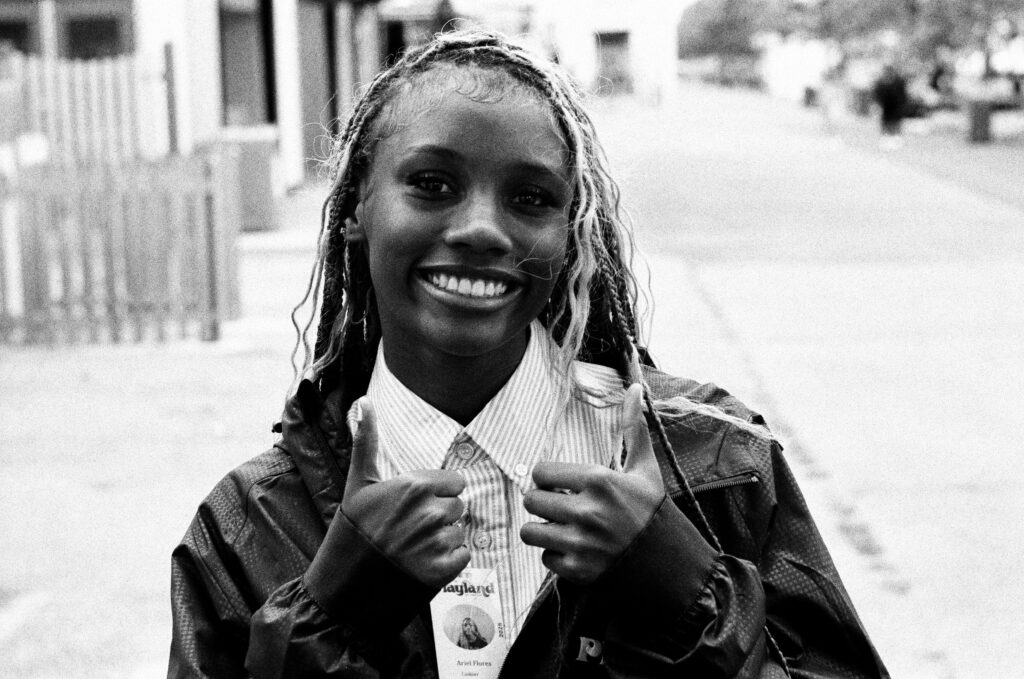
True to form, TMax’s performance pushed to 1600 mirrors its very strong performance at box speed.
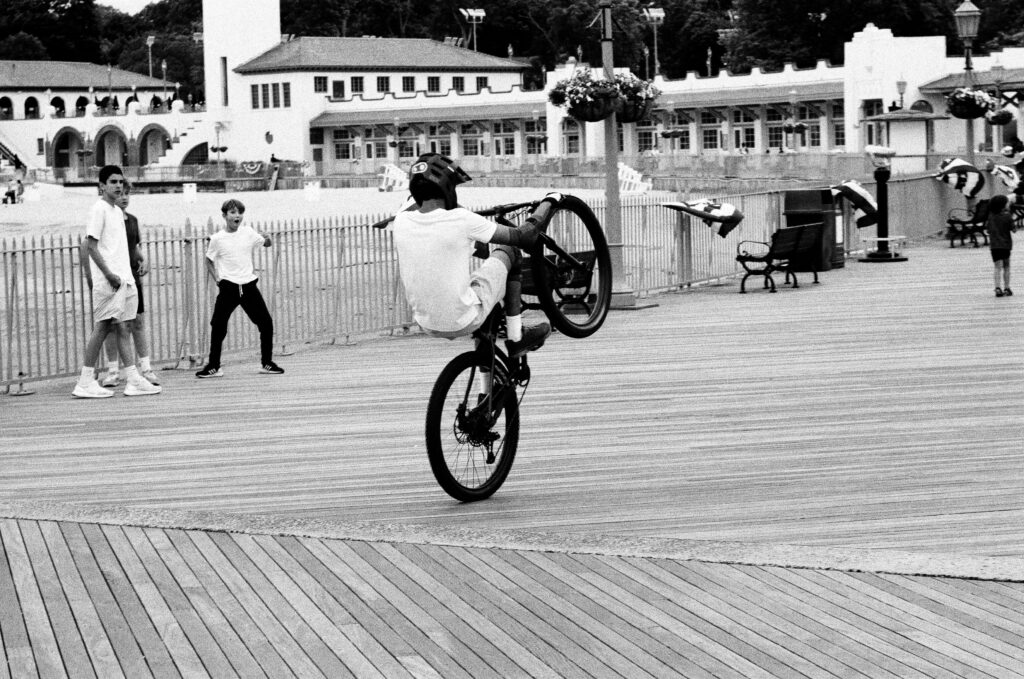
At 1600, it’s great for capturing action, like this expert trick bicyclist Justin on the boardwalk at Rye Playland. I love the gob smacked look on the face of the kids watching Justin do his thing on the bike.
With some urging from the readership (Ibraar, I think) coming from earlier posts in this series, I managed to squeeze in a roll of AgfaPhoto APX 400, which I shot at 1600.
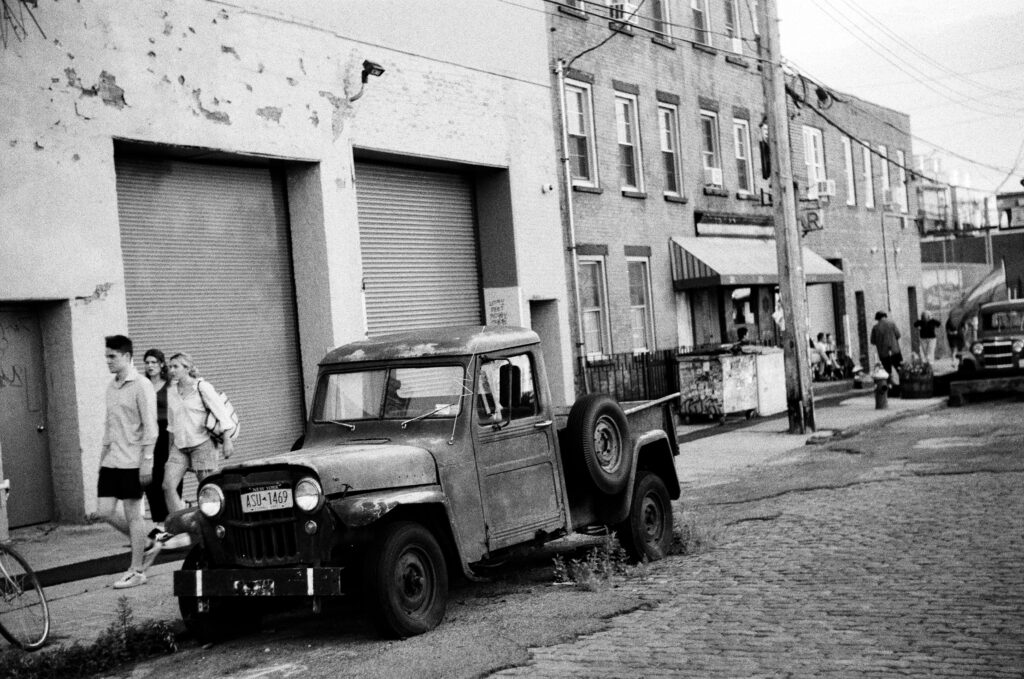
I think the Agfa performs well pushed two stops, and I have another roll that I will shoot at box speed to see how it compares.
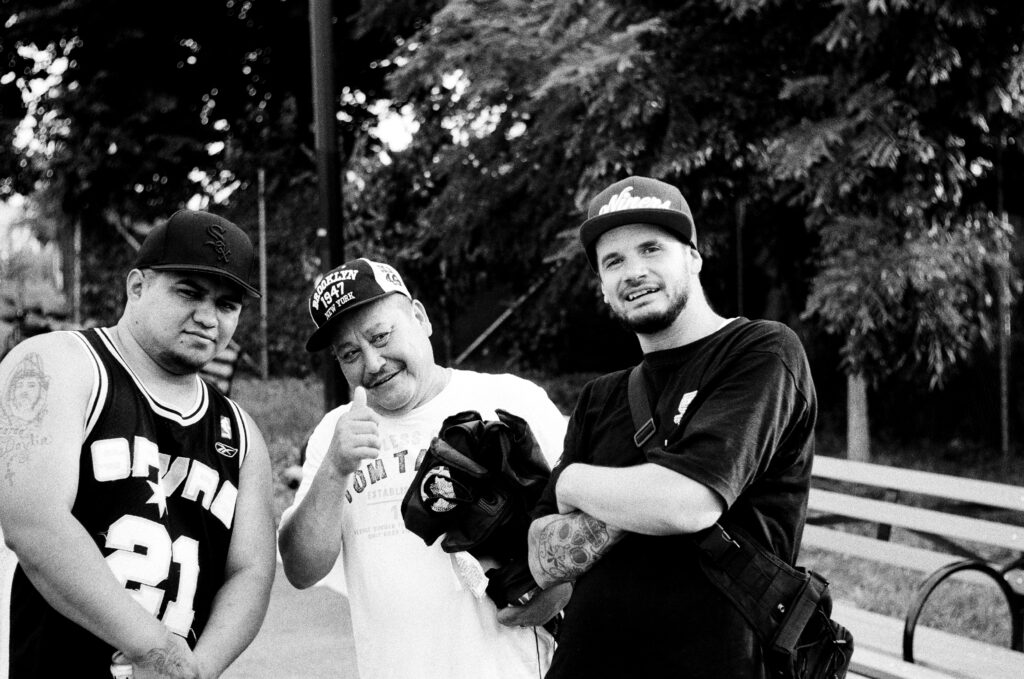
It’s got a bit of grain, maybe in the zone of Tri-X or HP5. Plenty of contrast, but I think there’s a pleasant silver/grey look to the Agfa. Another nice 400 ISA film, thanks for the tip 35mmc!
On some urging from Hamish, I’ve also included the high speed stocks for this post. Here I tried some out TMax 3200 at box speed on Times Square. I had some fun with the guys posing in costumes for the tourists, which I suppose included me that day. This shot was after I gave them a tip, which only seemed fair.
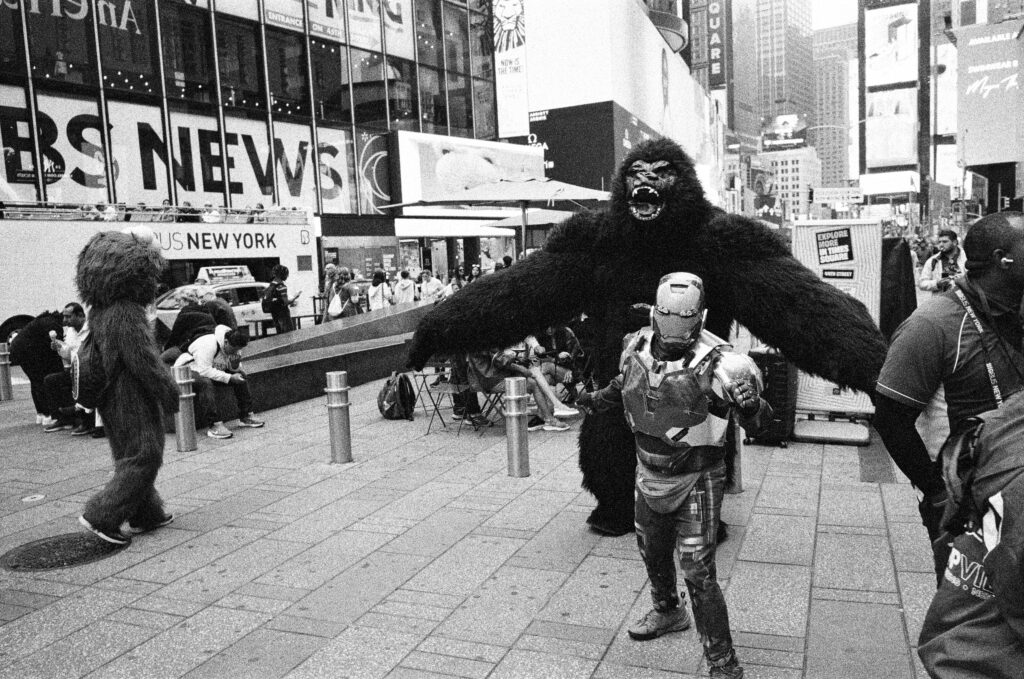
This was shot on the subway over to Grand Central. I think TMax 3200 performs quite nicely for the kind of street shooting I’m focusing on these days. It’s definitely a solid option.
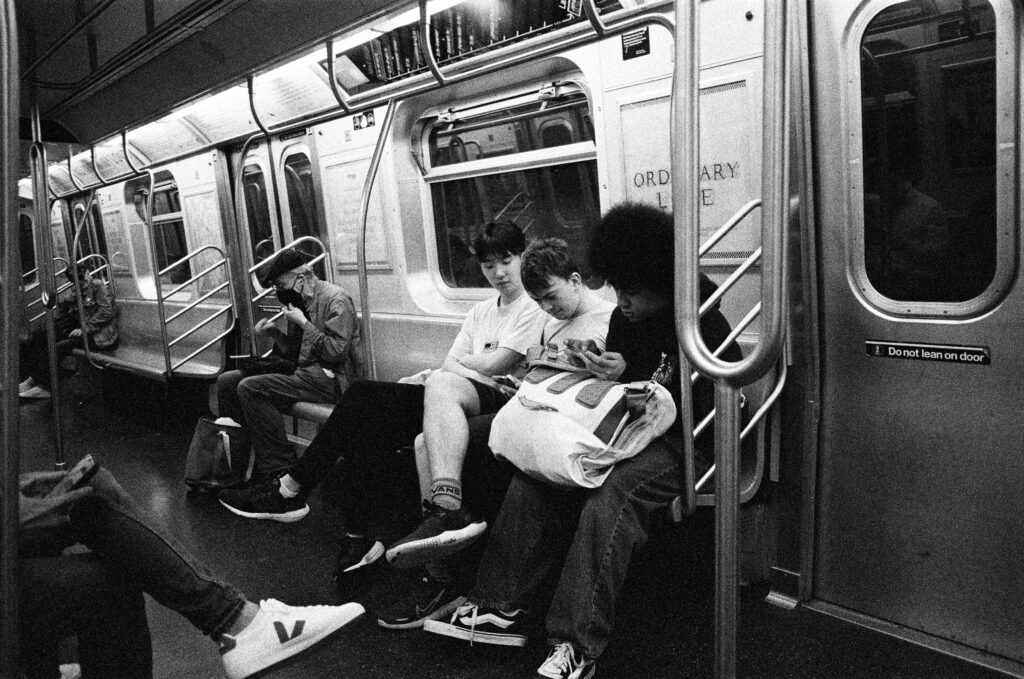
I also tried out Delta 3200. I don’t think anyone was paying much attention to the fact that I was there with my Leica, except maybe the little girl in the sunglasses in the centre of the frame. I love all the layers of little moments captured in the deep and wide frame of the 28mm that was made possible by stopping down with a fast film.
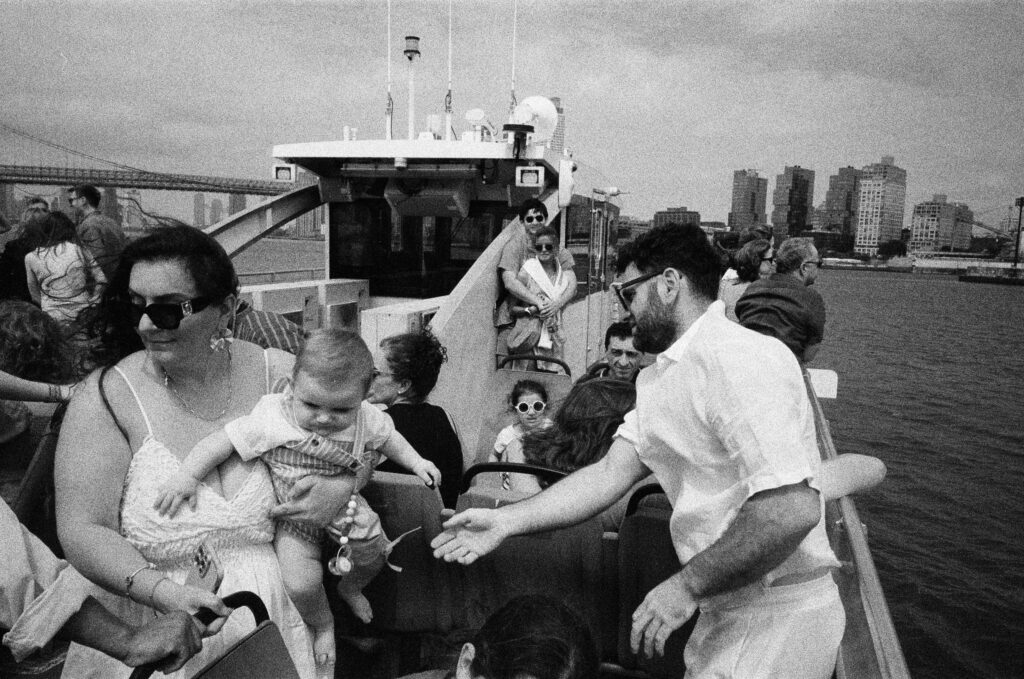
This roll of Delta 3200 feels a little grainier than TMax 3200.

Now that I’m an official convert to street shooting at higher ISO’s, I no longer feel the need to wait until the perfect low light situation to load my faster films. But I might be just as happy to shoot some 400 pushed a couple of stops as pay the premium for a 3200 emulsion.
It interesting how writing about my shooting has actually started to shape what and how I shoot. Part 4 has been a revelation and opened a new and exciting path for me in photography. I am really energized by trying to learn to capture moments on the go, and making people the main subject of my current phase of shooting after months of mostly landscapes in Canada.
I’ll send you off with some additional shots I did shooting 400 film @ 1600. These were all taken in Provincetown, MA on the day of the nationwide No Kings Protests.
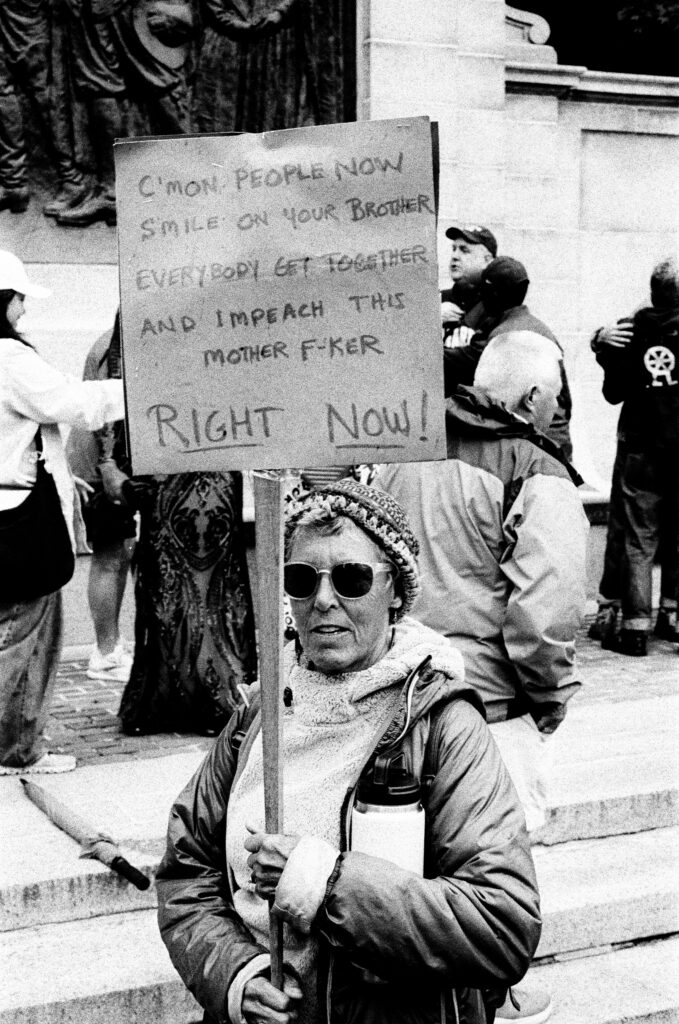
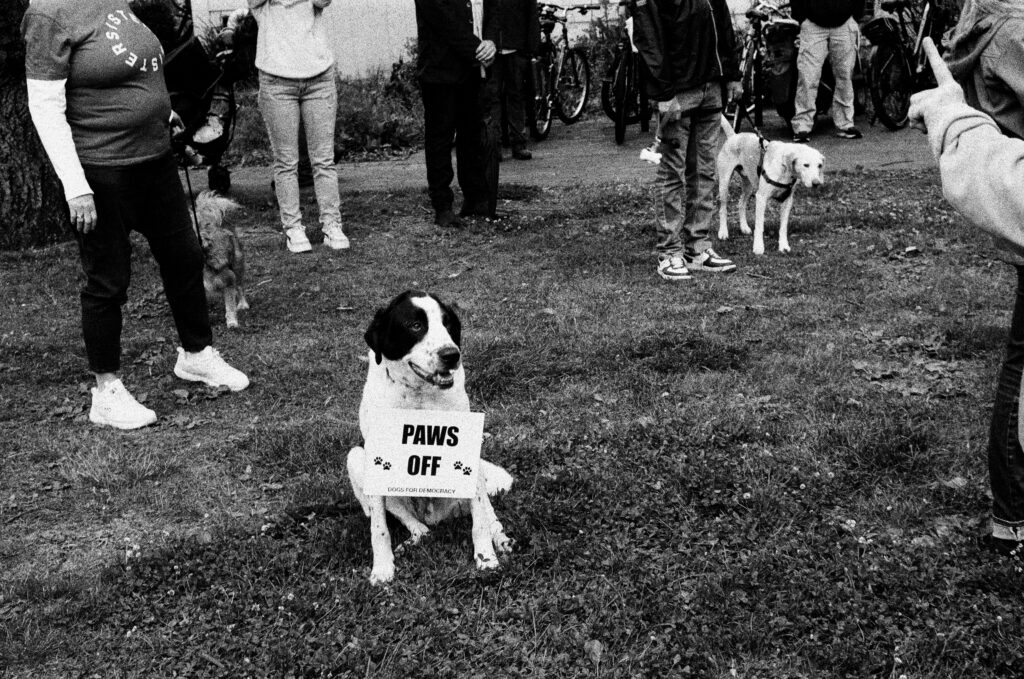
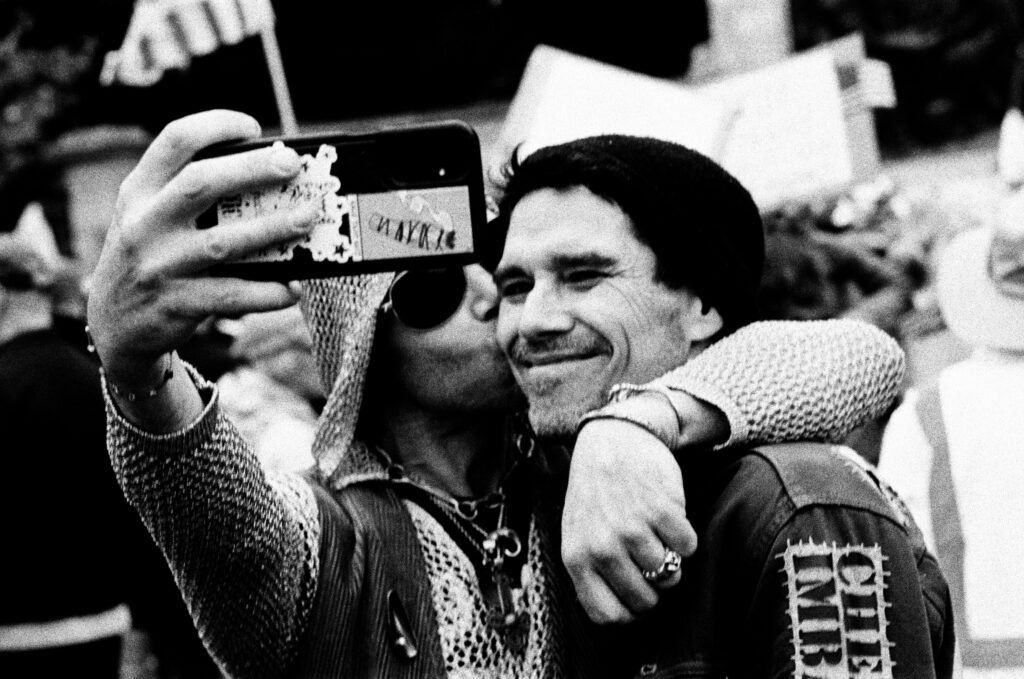
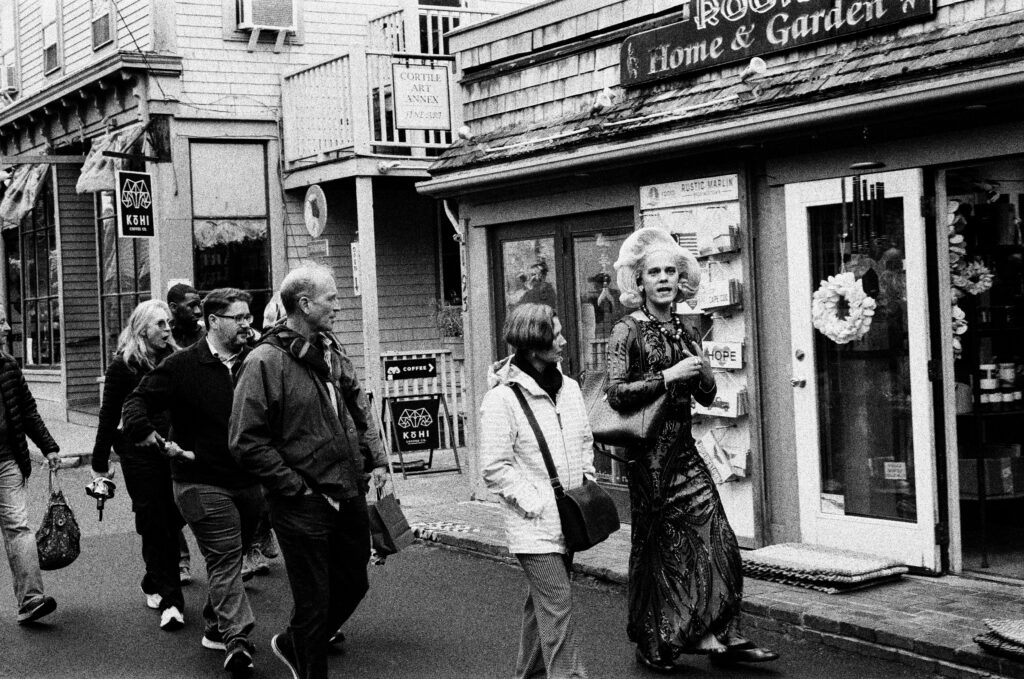
Having come this far, I think the series of posts won’t be complete without some kind of overview/recap to try to share what I’ve learned. So stay tuned for Part 5, the conclusion of my ‘grand tour’ of b&w film stocks.
Note: The cover image is a 1 second exposure in Grand Central Terminal with the Leica M3 shot on the Voigtlander Color Skopar 28mm f3.5 on Kentmere 400 @ 1600. I like the contrast between the guy closest to camera standing still checking something on his phone surrounded by ghostly shadows of people on the go.
Share this post:

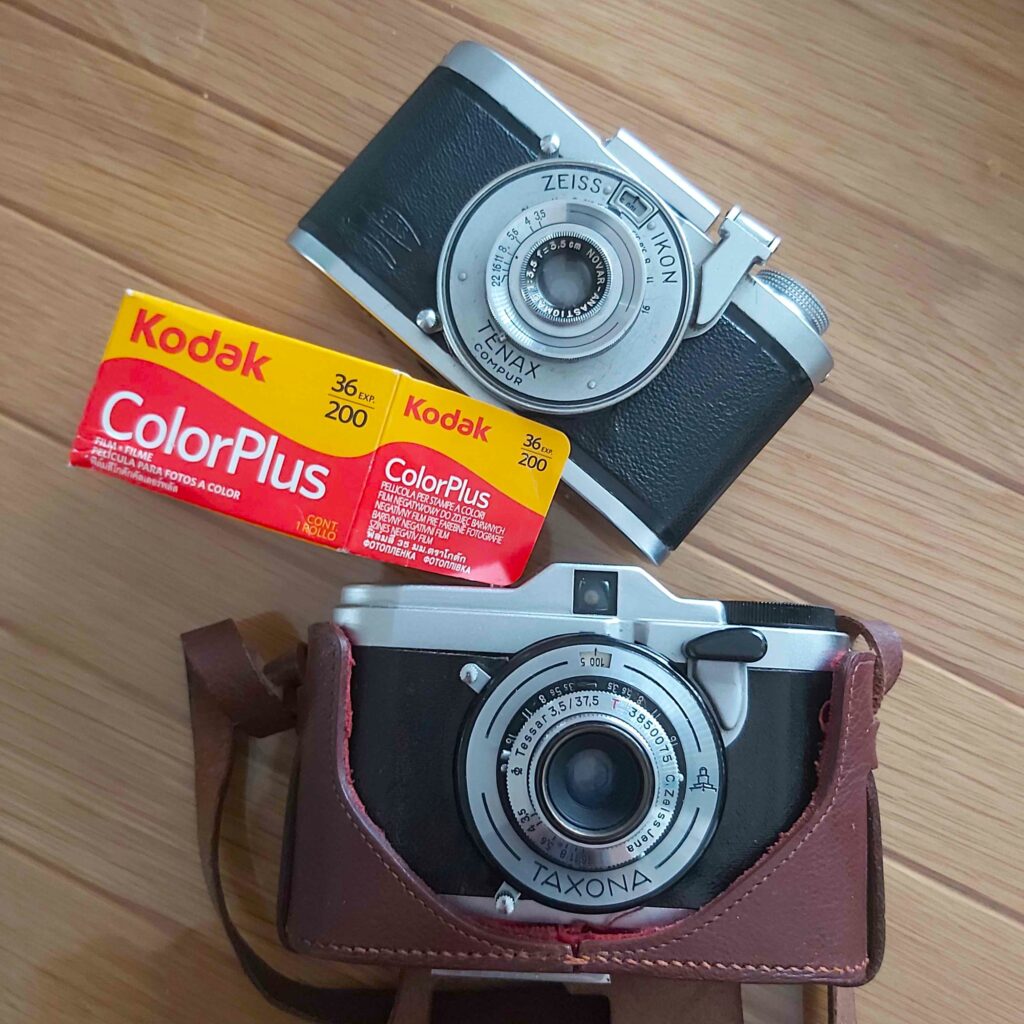
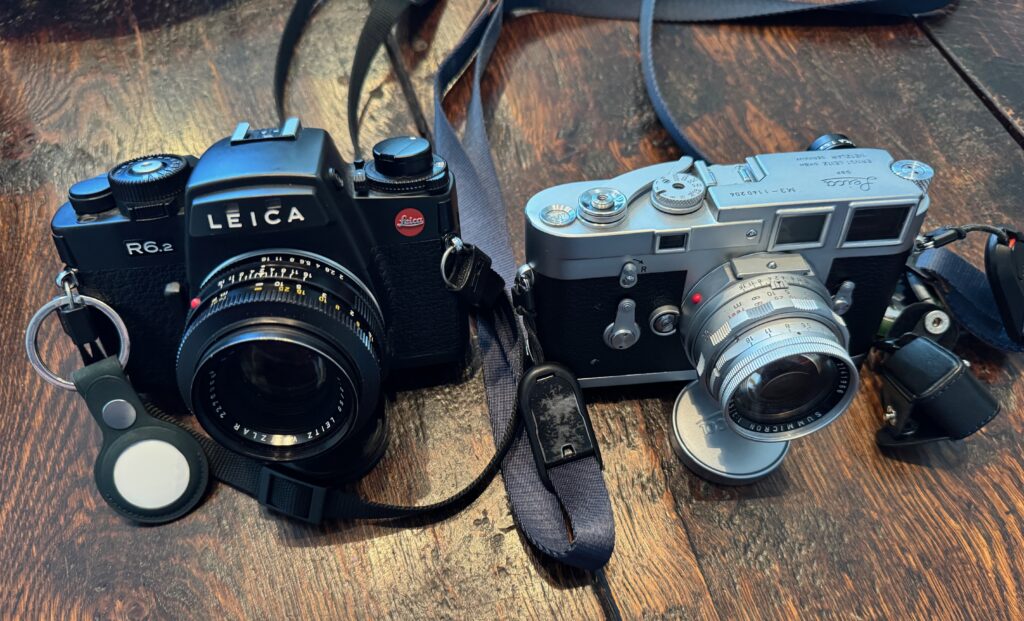
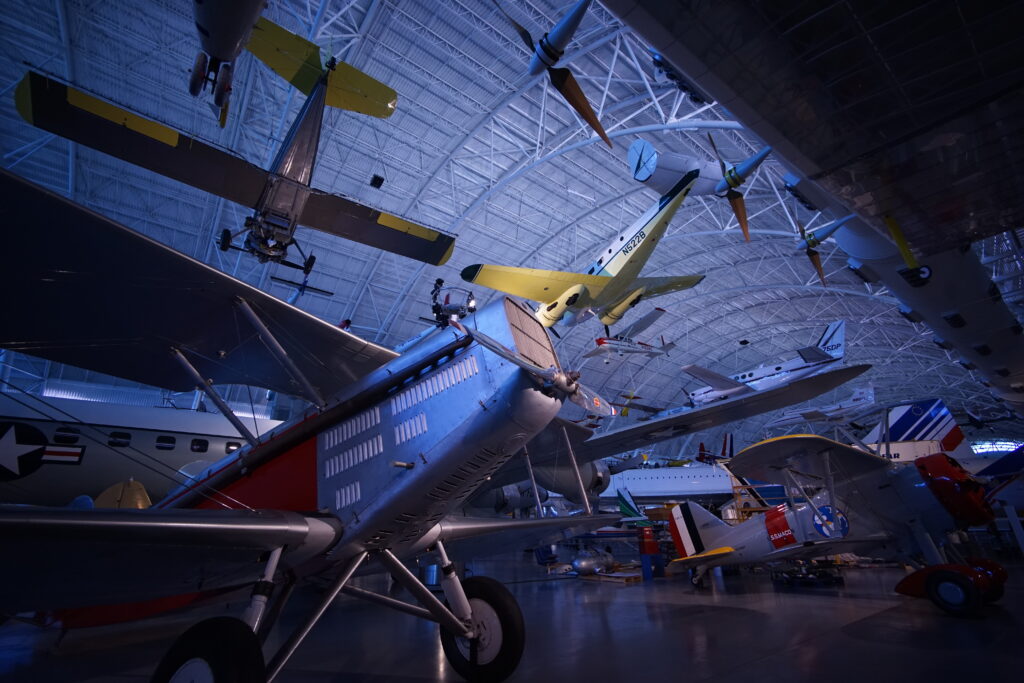
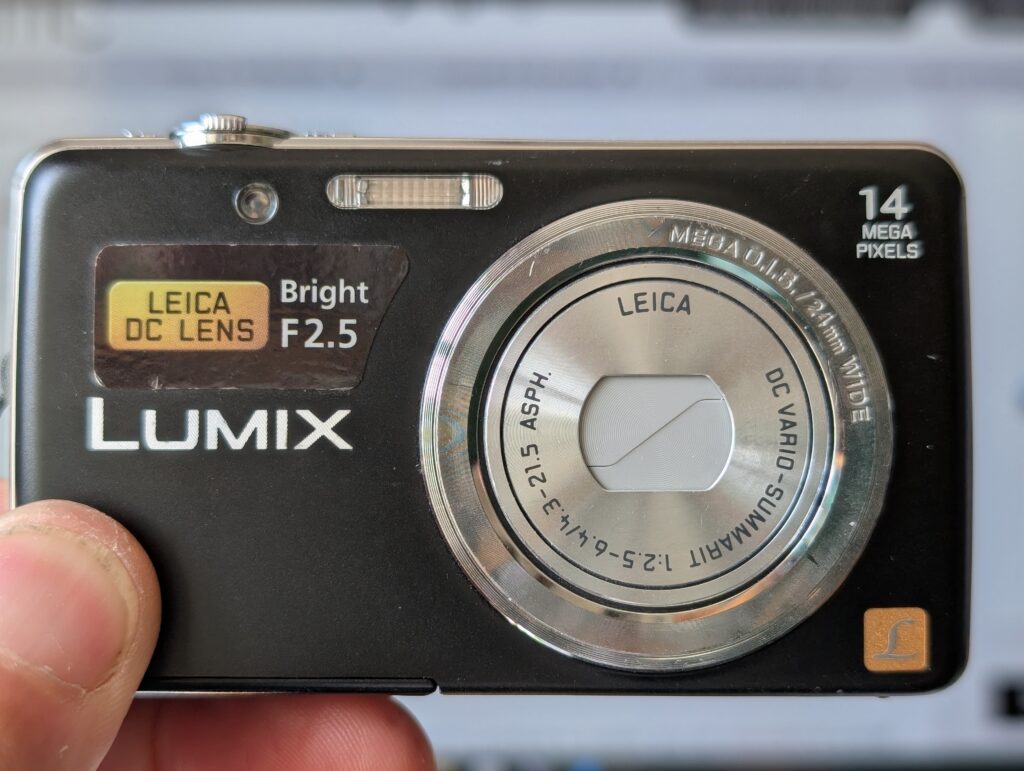
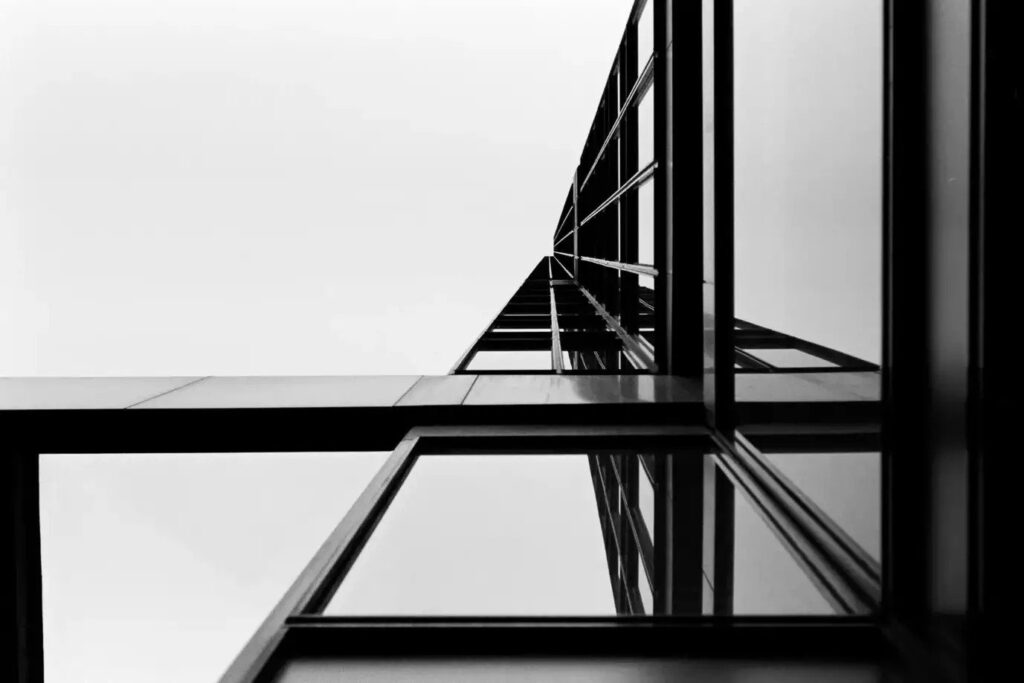


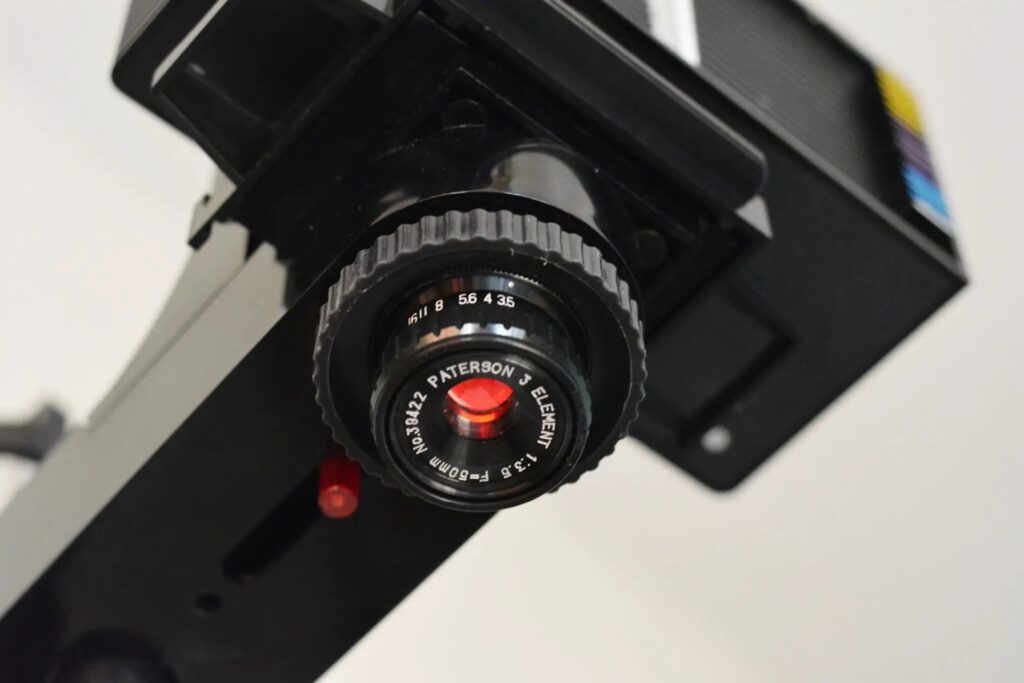
Comments
Keith Drysdale on In Search of Darkness and Light, B&W Film Stocks, Part 4
Comment posted: 13/08/2025
Comment posted: 13/08/2025
Comment posted: 13/08/2025
Comment posted: 13/08/2025
Ibraar Hussain on In Search of Darkness and Light, B&W Film Stocks, Part 4
Comment posted: 13/08/2025
A journey through New York with all its distinctive flavour.
You captured the vibe the life and all with great care.
My favourites are the steam pipe - being one of the first things that springs to mind when imagining NY. And of course the model on the zebra crossing. In fact there are so many memorable shots here.a great deal better than other (Inc some Leica ambassador) street photos - those being random shots of strangers - yours having some harmony and a vibe without being pretentious.
All of the films performed very well pushed 2 stops.
I know HP5 is famed for being great but I’d have been pleased with any
Comment posted: 13/08/2025
thorsten on In Search of Darkness and Light, B&W Film Stocks, Part 4
Comment posted: 13/08/2025
This wants to become a book!
Comment posted: 13/08/2025
Comment posted: 13/08/2025
Curtis Heikkinen on In Search of Darkness and Light, B&W Film Stocks, Part 4
Comment posted: 13/08/2025
Comment posted: 13/08/2025
Gary Smith on In Search of Darkness and Light, B&W Film Stocks, Part 4
Comment posted: 13/08/2025
I haven't pushed film in 50 years.
Thanks for your datapoints.
Comment posted: 13/08/2025
David Pauley on In Search of Darkness and Light, B&W Film Stocks, Part 4
Comment posted: 13/08/2025
Comment posted: 13/08/2025
Geoff Chaplin on In Search of Darkness and Light, B&W Film Stocks, Part 4
Comment posted: 13/08/2025
Comment posted: 13/08/2025
Alexander Seidler on In Search of Darkness and Light, B&W Film Stocks, Part 4
Comment posted: 14/08/2025
Comment posted: 14/08/2025
Michael Jardine on In Search of Darkness and Light, B&W Film Stocks, Part 4
Comment posted: 15/08/2025
I've unusually had a couple of film photography projects for other people in the last few months so I decided to to try Delta 400, with Ilford's proprietary 'DD-X' developer (I self-develop B&W work) and I'm damned if I can discern any significant difference between shooting it at box, +1 or +2 (1600 ISO). DD-X is expensive but the flexibility and confidence that it will print and scan sweetly is a revelation.
Comment posted: 15/08/2025